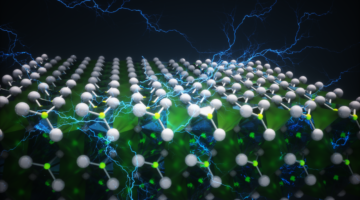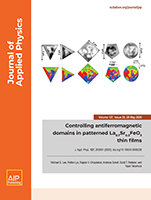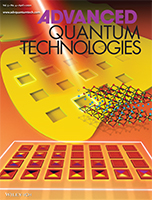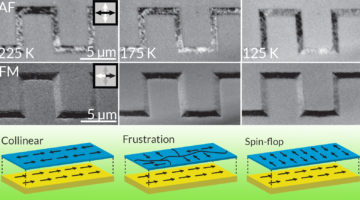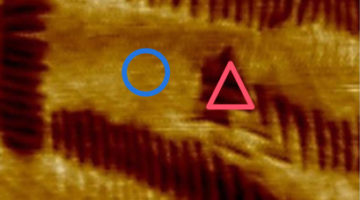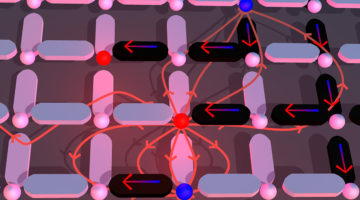Researchers showed that hafnium oxide surprisingly exhibits enhanced ferroelectricity (reversible electric polarization) as it gets thinner. The work shifts the focus of ferroelectric studies from more complex, problematic compounds to a simpler class of materials and opens the door to novel ultrasmall, energy-efficient electronics. Read more »![]()
![]()
Controlling antiferromagnetic domains in patterned La0.7Sr0.3FeO3 thin films
Antiferromagnetic spintronics have gained interest because they can be controlled at terahertz frequencies and are insensitive to external magnetic fields. Due to dimensional confinement as well as microstructuring by ion implantation, the spin axis of an antiferromagnetic oxide can be robustly controlled in a deterministic way up to room temperature. Read more »
Highly Enhanced Curie Temperature in Ga‐Implanted Fe3GeTe2 van der Waals Material
Researchers report an effective and reliable method of increasing the Curie temperature of ferromagnetic Fe3GeTe2 (FGT) van der Waals (vdW) material by Ga implantation, opening a new opportunity for tailoring the magnetic properties of vdW materials beyond room temperature for future spintronics applications. Read more »
Crystal Misorientation Toughens Human Tooth Enamel
Researchers discovered that, in the nanoscale structure of human enamel (the hard outer layer of teeth), slight crystal misorientations serve as a natural toughening mechanism. The results help explain how human enamel can last a lifetime and provides insight into strategies for designing similarly tough bio-inspired synthetic materials. Read more »![]()
![]()
Controlling Spin in Antiferromagnetic Nanostructures
Researchers discovered that the spin configuration of a nanostructured antiferromagnetic material can be affected by the dimensions of features imprinted onto the material. The results suggest that nanoscale patterning can be a viable tool for engineering spin configurations in future antiferromagnetic spintronic devices. Read more »![]()
![]()
Tuning Material Properties with Laser Light
Researchers demonstrated that coupled electronic and magnetic properties in a material can be repeatably tuned using laser light. The results suggest the possibility of creating microelectronic devices that use a laser beam to erase and rewrite bits of information in materials engineered for random-access memory and data storage. Read more »![]()
![]()
How to Catch a Magnetic Monopole in the Act
A research team has created a nanoscale “playground” on a chip that simulates the formation of exotic magnetic particles called “monopoles.” The study could unlock the secrets to ever-smaller, more powerful memory devices, microelectronics, and next-generation hard drives that employ the power of magnetic spin to store data. Read more »
Spatial and Temporal Correlations of XY Macro Spins
Artificial spin-ice structures have become prototypical systems to study vector spin frustration at the microscale and have recently been expanded towards XY spin systems and fundamentally fascinating phase transitions. The illustration depicts the quasi long-range ordered vortex phase in a nano disk honeycomb lattice imaged by magnetization-sensitive photoemission electron microscopy. Read more »
Tunable Ferromagnetism in a 2D Material at Room Temperature
Researchers combined soft x-ray spectroscopy and microscopy to demonstrate the tunable ferromagnetic characteristics of a two-dimensional layered material at room temperature. The results open up exciting opportunities for the use of such materials in low-power spintronics, high-density magnetic storage, and flexible electronics. Read more »
Pupa Gilbert to Receive the 2018 Shirley Award
Pupa Gilbert, professor of physics at the University of Wisconsin at Madison, is the 2018 recipient of the David A. Shirley Award for Outstanding Scientific Achievement at the ALS, “for her development of polarization-dependent imaging contrast mapping to image the orientation of carbonate nanocrystals in marine biominerals.” Read more »
